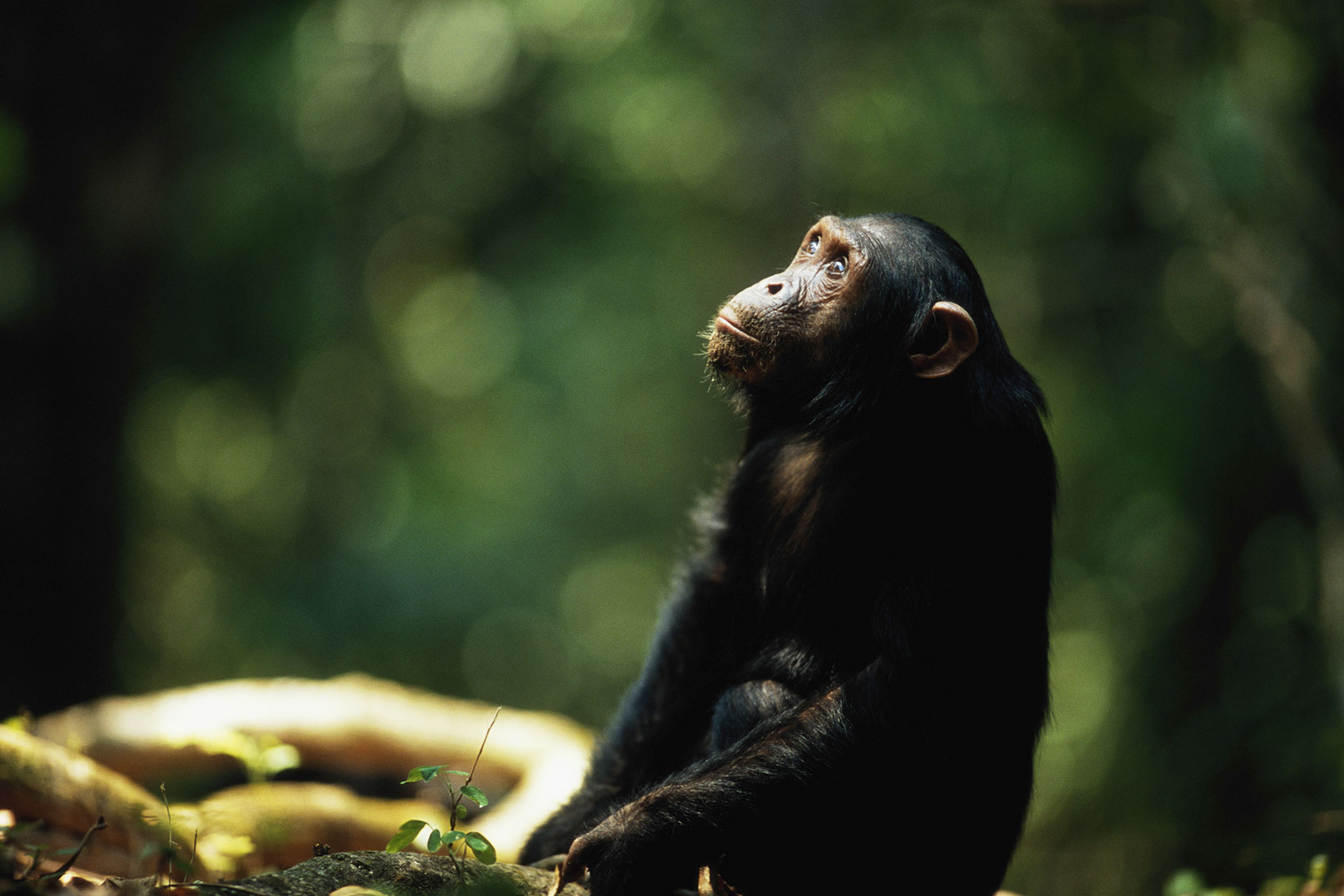In 2018, a group of French scientists covered a male fruit fly in pink dust before introducing him to a room full of virgin females. In a parallel room, they did the same thing but dusted him in green dust instead. Then, as the males made their entrance, adorned in their colors, they mated with one of the females.
What scientists observed was that virgin females in the room who observed the mating scene caught onto something: Not only did they seem to learn who was the preferential mate based on the colors he was adorned in, but they also passed that knowledge onto the rest of their colony. In other words, the male colors were trending — almost like how different hairstyles wane in and out of fashion for humans.
“Our study shows one major way by which culture can affect evolution as it changes the selective social context of every individual,” the authors wrote in Science.
Although some scientists avoid ascribing “culture” or “language” to animals because their connections and communication are different in nature from human beings, a growing body of research suggests culture — defined as behaviors or artifacts that are socially learned from others and sustained long enough that they are seen as traditions — is prevalent across many species in the animal kingdom.
In some cases, these social behaviors can lead to physiological changes that occur as the species evolves over time and it can take many different forms. For example, the teeth and jaw structures of orcas change in response to dietary differences across regional cultures while learned changes in bird song can help a bird identify itself to its neighbors. The study of cultural evolution in animals can have profound impacts on how we understand evolutionary biology, as well as how our own species fits and relates into the ecosystems around us.
While some evidence suggests brain size correlates with complex cultures, such that more intelligent animals are more likely to learn behaviors and pass them on, recent evidence suggests even invertebrates like the fruit fly can have culture. Here are five animals whose evolutionary biology has been shaped in some way by their culture.
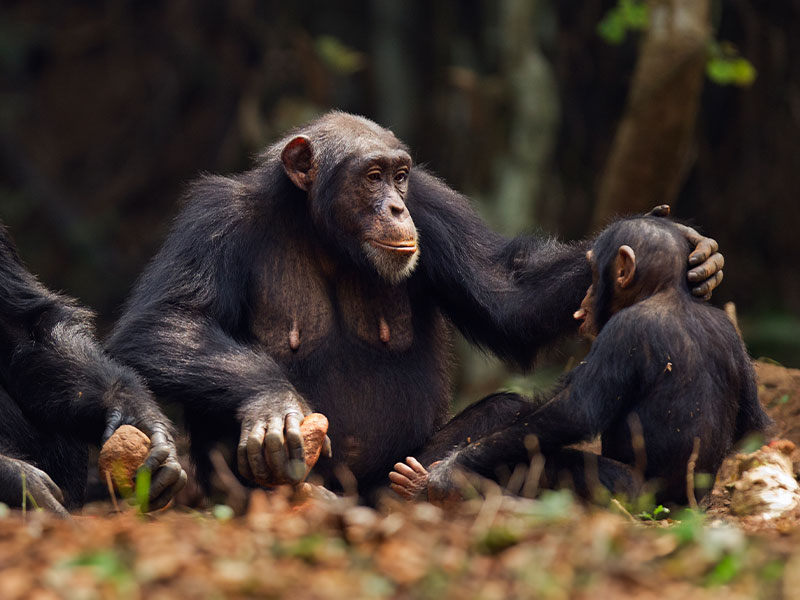 Chimpanzees (Getty Images/Anup Shah)
Chimpanzees (Getty Images/Anup Shah)In the 1990s, researchers noticed regional differences in chimpanzees that lived in different parts of Africa. While hungry chimpanzees in West Africa, for example, used big pieces of wood like hammers to crack open nuts to snack on, chimps in central Africa used stout sticks to dig into underground termite nests, not unlike a human digging a hole with a spade. Then, they thread long grass stems through the tunnel they made with the stick, which the termites latched onto so the chimp could fish them out.
A 1999 study in Nature examining all of the different cultural behaviors in chimpanzees altogether found 39 such patterns, which was "far more extensive" than had previously been documented for "any animal species except humans," according to the paper.
There is little evidence of genetic differences in chimpanzees that could explain this, and these behaviors are too complex for each individual chimpanzee to sort out on their own. Instead, it seems chimpanzees watched others perform these feeding techniques, learned them and passed them on through tradition, said study author Andrew Whiten, Ph.D., an emeritus professor in the School of Psychology and Neuroscience at the University of St. Andrews who studies animal culture in the U.K. That’s further supported by archaeological evidence.
“We know that these behaviors have a long history because archaeologists have gone in and excavated at the sites where chimpanzees are cracking those nuts in West Africa using stones,” Whiten told Salon in a phone interview. “You can tell from the marks on the stones and the nuts and so on what was happening over 4,000 years ago.”
Want more health and science stories in your inbox? Subscribe to Salon's weekly newsletter Lab Notes.
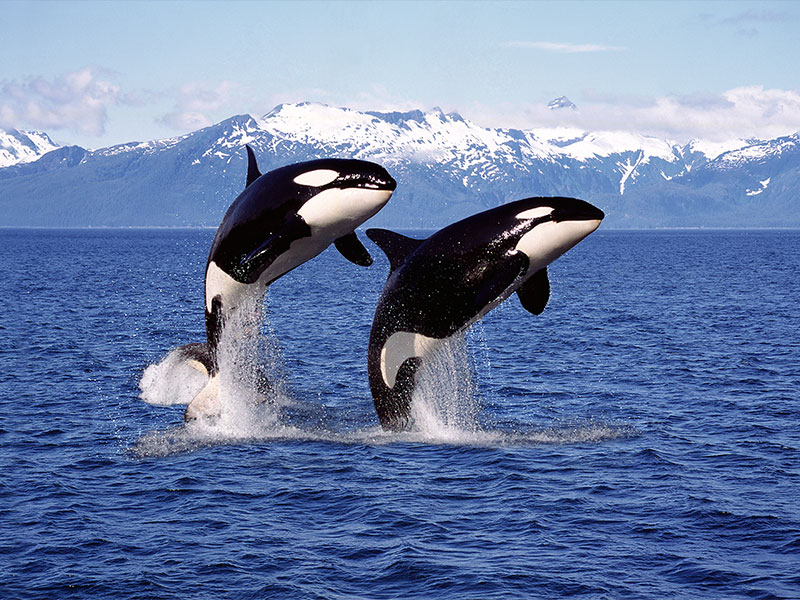 Orcas (Getty Images/slowmotiongli)Image_placeholder
Orcas (Getty Images/slowmotiongli)Image_placeholderWeighing up to six tons and stretching the length of five adult humans, orcas are one of the most intelligent mammals in the sea. They get a bad rap for “playing” with their food, with viral videos showing them tossing seals back and forth among their pod. These animals have strong familial bonds that are matriarchal, and some instances where orcas are seen to play with their food may actually be mothers teaching their inexperienced calves to hunt.
Although all orcas use echolocation to hunt, regional pods have different preferences on what they like to eat. Although orcas off the coast of Norway, for example, primarily rely on Atlantic herring for their food source, 29 years of observations in the region revealed that four specific groups of orcas there preferred to eat seals instead. Meanwhile, orcas in the Salish Sea feast on chinook, and orcas in the Antarctic eat penguins.
These aren't exactly minor details. One study in Nature Communications found cultural variations in diet, similar to New Yorkers eating pizza or Southerners eating fried foods, which have been linked to actual changes in the species’ genetics over time, with some evidence suggesting pods of orcas that eat seals have developed stronger jaw muscles and different digestive enzymes that can process seals. While this may be evolutionarily advantageous in allowing them to hunt with more efficiency, it could easily become disadvantageous as climate change and human impacts limit or change the availability of certain food sources, creating an evolutionary bottleneck.
“Given these findings, the almost-exclusive focus on humans by studies of the interaction of culture and genes should be expanded, and exploration of culture–genome coevolution models in suitable non-human animal systems encouraged,” the authors wrote.
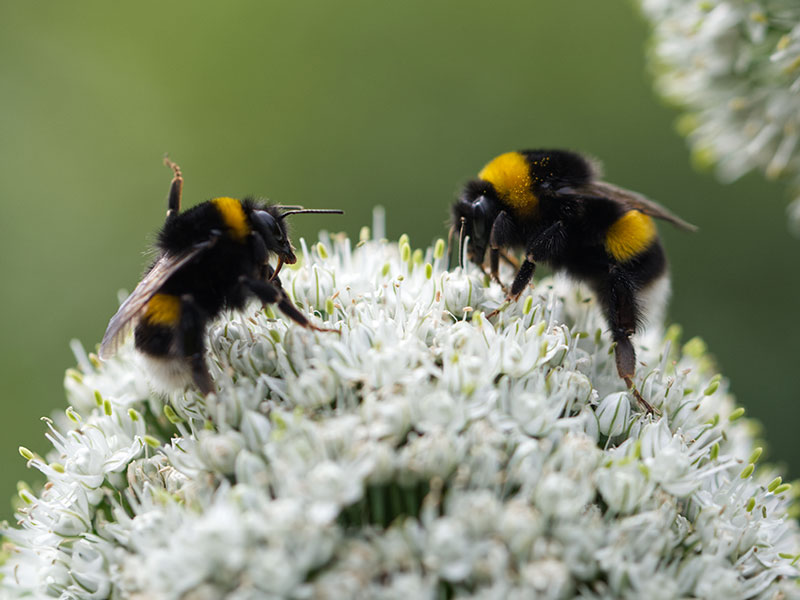 Bumblebees (Getty Images/Christian Gerst/500px)
Bumblebees (Getty Images/Christian Gerst/500px)Human beings have brains that weigh 2.8 pounds and are packed with 85 billion neurons, on average. In comparison, a bee brain is about the size of a sesame seed and contains fewer than one million neurons. Yet a study published in PloS Biology in March pushed back against the idea that only animals with big brains like chimpanzees or orcas could perform the sort of social learning that develops culture.
Using the same test given to species like chimps to see how the animals share information with one another, researchers gave bumblebees a puzzle box with red or blue tabs. When bumblebees successfully opened the box by pushing on red or blue tabs in a clockwise or counterclockwise direction, they were rewarded with sugar. Bees had already been shown to perform social learning in a similar experiment, but the study published in March took it a step further and reintroduced bees who had learned this behavior into naïve colonies, along with fresh puzzle boxes.
What they discovered was that the bees who had already learned how to solve the puzzle taught their new skills to the rest of the colony. Even when bumblebees in the colony found a new way to open the box, they still showed a preference for the way their neighbors had taught them, suggesting this knowledge had already begun to take root as "tradition," said study author Alice D. Bridges, a Ph.D. student at Queen Mary University of London.
It’s still unclear to what extent this culture translates to wild bumblebees because these experiments were done in a lab. Plus, each season, the only bumblebee in a colony to survive for the next season is the new queen, so it’s also unclear how long these traditions could be perpetuated, Bridges said.
“We just assumed that because it's a little insect this must be an innate behavior or it must be genetically coded, but when you actually look at what these things are doing their behavior is super complicated and really rich compared to a lot of species,” Bridges told Salon in a phone interview. “Clearly in this case, when they were presented with a puzzle that had the chance to develop into a local culture, that is exactly what happened.”
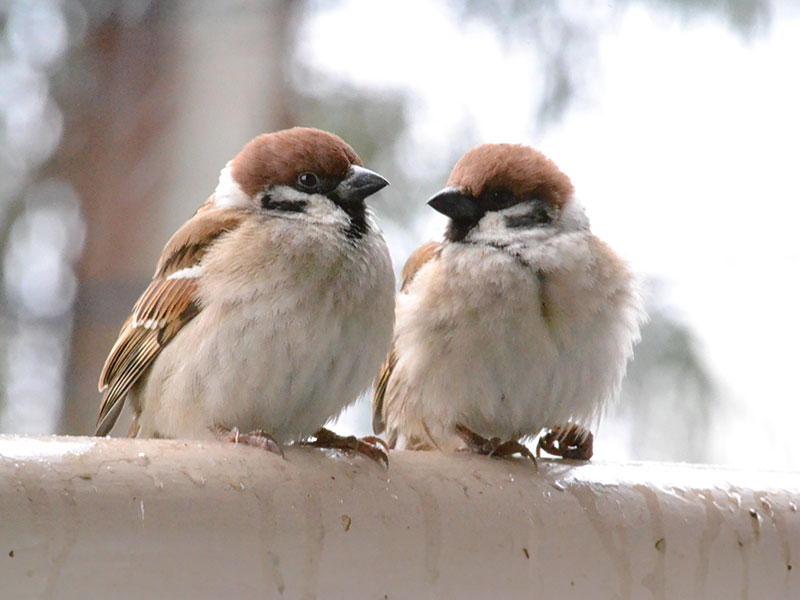 Sparrows (Getty Images/Mai Tsugihara)
Sparrows (Getty Images/Mai Tsugihara)Of roughly 10,000 species of birds, 4,000 are songbirds, each with their own specialized calls to communicate about approaching predators, available food sources or potential mates. Evidence suggests songbirds can also learn variations in songs from one another and that these changes last across generations: One 2016 study found variations in yellowhammer bird songs were preserved for up to 100 years.
Bird song can vary among species by region, as one 2018 study published in Nature Communications elucidated in an attempt to explain what causes these variations. Sampling hundreds of swamp sparrows in the Eastern U.S., researchers found 160 different syllable types were involved in the sparrows’ repertoire that persisted in similar patterns for decades.
As baby sparrows grow up, they repeatedly listen to their elders’ songs, repeating the most common syllables. According to the study, this so-called conformist bias, paired with the extreme precision of the songbird’s notes, can persist as a tradition in swamp sparrows for hundreds of years. In a prior study, common notes were found to be more attractive to female sparrows than variations in the common dialect, suggesting this behavior may be evolutionarily advantageous. Just like humans, usually, a relationship goes smoother if they’re able to properly communicate.
“Our findings, then, suggest that the ability to transmit traditions with precision can no longer be considered a fundamental difference between how human and non-human cultures evolve,” the authors wrote.
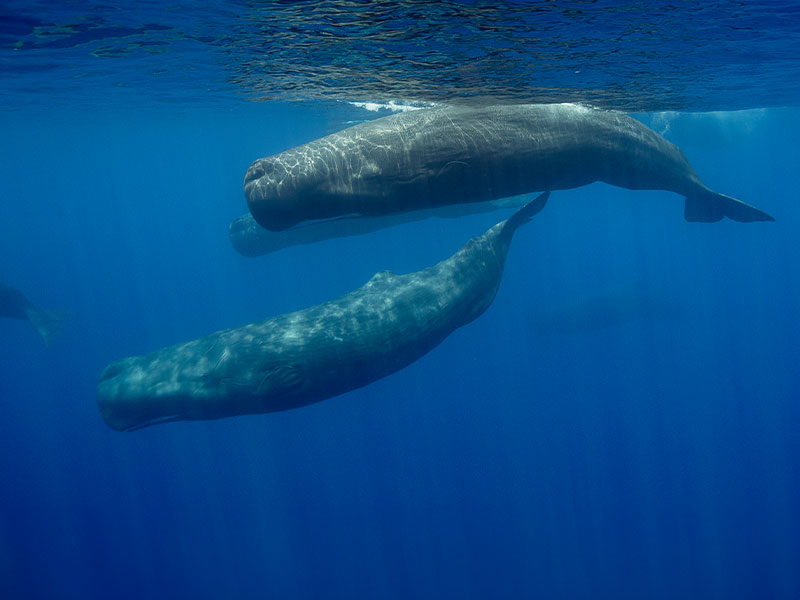 Sperm Whales (Getty Images/eco2drew)
Sperm Whales (Getty Images/eco2drew)The average sperm whale lives to be in its 60s, with a strong familial structure highly dependent on learning how to hunt, migrate and survive from its elders. Sperm whales, much like orcas and humpback whales, have a huge repertoire of songs they use to communicate.
In a study published in the Proceedings of the National Academy of Sciences last year, researchers found seven different clans of sperm whales living in the Pacific Ocean differentiated from one another through variations in clicks they use to communicate called “codas.” In other words, sperm whales showed a sort of regional accent in their song researchers call “identity codas,” similar to how someone from Minnesota might say "pop" while someone from the East Coast would call the same thing "soda."
“These clans overlap in space, so it's not just like people from France and people from the U.S. that are separated by some boundary that can't cross,” said Shane Gero, a whale biologist working to decode sperm whale language as Project CETI's field biology lead. “These are multicultural areas of the ocean, but there's still this recognition of: ‘I'm from the Eastern Caribbean clan and you're not.’”
Although many questions remain about how variations in foraging patterns differ across clans because they dive 1,000 meters below sea level to hunt for prey, variations have been observed in how regional clans care for their young, with some clans having only mothers giving milk to their young but others having a designated wet nurse sperm whale to give milk to the babies, Gero said.
Project CETI is using artificial intelligence to track variations in sperm whale songs to help understand how they communicate. Distinguishing cultural differences among clans can help redirect conservation efforts to ensure that these rich and still widely unknown cultures don’t die out.
“This is a project about listening to someone who is fundamentally different from us and learning what’s important to them and then hopefully changing the way that we live because of what we’ve learned,” Gero told Salon in a video call. “Using these amazing technologies that humans have built to try and understand something else that we share the planet with is a pretty important overarching message given how humanity seems to be getting along right now.”
